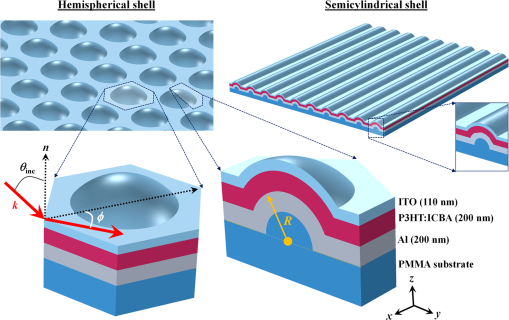Physical Address
304 North Cardinal St.
Dorchester Center, MA 02124
Physical Address
304 North Cardinal St.
Dorchester Center, MA 02124

Upgrading to Future

Upgrading to Future

Organic Solar Cells seem new as traditional silicon-based photovoltaic cells have long held dominion over the solar panel market. However, they come burdened with their own set of limitations. Their inflexibility, high costs, and energy-intensive production processes have posed significant challenges. On the other hand, organic photovoltaic cells present a number of benefits. They boast flexibility, lightweight construction, and demand relatively lower energy inputs for fabrication. However, they have historically suffered from inferior efficiency when compared to their silicon counterparts.

Researchers at the University of California, Irvine, have developed a new type of organic solar cell that could change the game. The cells are hemispherical in shape, which allows them to absorb more light than flat solar cells.
This advancement holds promise for heightened photovoltaic efficiency and the integration of solar technology into wearable electronics.
The new cells are made from a material called P3HT. P3HT is a conjugated polymer, which means that it has alternating single and double bonds between its carbon atoms. This gives P3HT the ability to absorb light and convert it into electricity.
Investigations conducted by the research team unveiled a remarkable 20% augmentation in light absorption attributed to the curved architecture of the cells. This phenomenon stems from their ability to capture light from a wider array of incident angles.
The new hemispherical organic solar cells are still in the early stages of development. However, they have the potential to revolutionize the solar industry. If they can be made more efficient and cost-effective, they could become a viable alternative to silicon solar cells.
Moreover, the versatility of organic photovoltaic cells extends to diverse applications, including wearable electronics and the integration of photovoltaics into building structures (referred to as building-integrated photovoltaics or BIPV). This integration holds promise for self-sustaining structures capable of generating electricity, thereby mitigating reliance on traditional power grids.
The development of new, more efficient organic solar cells is a major step forward for the solar industry. These cells have the potential to make solar energy more affordable and accessible, helping us to move towards a more sustainable future.
Here are some of the companies working towards organic solar cell technology:
These are just a few of the many companies that are working on this promising technology. With continued research and development, organic solar cells have the potential to revolutionize the solar industry.
Also Check: The Magic of Generative AI
The organic solar cells are still in the research phase, but they have the potential to be a game-changer in the tech industry because they are:
Organic solar cells have many potential applications, including wearable electronics, power-generation windows and greenhouses, internet-of-things devices, and biomedical devices.
according to a report by Statista, the top 10 solar panel manufacturers in 2023 were:
Reference from the original study